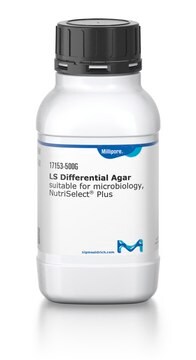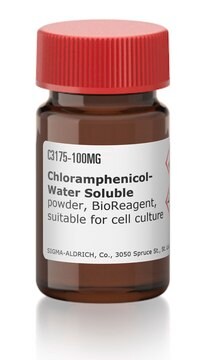20920
Cadmium sulfate 8/3-hydrate
puriss. p.a., ACS reagent, ≥99.0% (calc. based on CdSO4 · 8/3 H2O, KT)
About This Item
Recommended Products
grade
ACS reagent
puriss. p.a.
Quality Level
Assay
≥99.0% (calc. based on CdSO4 · 8/3 H2O, KT)
form
powder or crystals
impurities
≤0.005% insoluble matter in H2O
anion traces
chloride (Cl-): ≤10 mg/kg
nitrate and nitrite (as NO3-): ≤30 mg/kg
cation traces
As: ≤2 mg/kg
Ca: ≤50 mg/kg
Co: ≤5 mg/kg
Cr: ≤5 mg/kg
Cu: ≤5 mg/kg
Fe: ≤5 mg/kg
K: ≤50 mg/kg
Mg: ≤5 mg/kg
Mn: ≤5 mg/kg
Na: ≤50 mg/kg
Ni: ≤10 mg/kg
Pb: ≤20 mg/kg
Zn: ≤50 mg/kg
SMILES string
[Cd++].[Cd++].[Cd++].[H]O[H].[H]O[H].[H]O[H].[H]O[H].[H]O[H].[H]O[H].[H]O[H].[H]O[H].[O-]S([O-])(=O)=O.[O-]S([O-])(=O)=O.[O-]S([O-])(=O)=O
InChI
1S/3Cd.3H2O4S.8H2O/c;;;3*1-5(2,3)4;;;;;;;;/h;;;3*(H2,1,2,3,4);8*1H2/q3*+2;;;;;;;;;;;/p-6
InChI key
AGHQMAQBLOTWPQ-UHFFFAOYSA-H
Looking for similar products? Visit Product Comparison Guide
Related Categories
Signal Word
Danger
Hazard Statements
Precautionary Statements
Hazard Classifications
Acute Tox. 2 Inhalation - Acute Tox. 3 Oral - Aquatic Acute 1 - Aquatic Chronic 1 - Carc. 1B - Muta. 1B - Repr. 1B - STOT RE 1
Target Organs
Bone,Kidney,Respiratory system
Storage Class Code
6.1A - Combustible acute toxic Cat. 1 and 2 / very toxic hazardous materials
WGK
WGK 3
Flash Point(F)
Not applicable
Flash Point(C)
Not applicable
Choose from one of the most recent versions:
Already Own This Product?
Find documentation for the products that you have recently purchased in the Document Library.
Customers Also Viewed
Our team of scientists has experience in all areas of research including Life Science, Material Science, Chemical Synthesis, Chromatography, Analytical and many others.
Contact Technical Service















